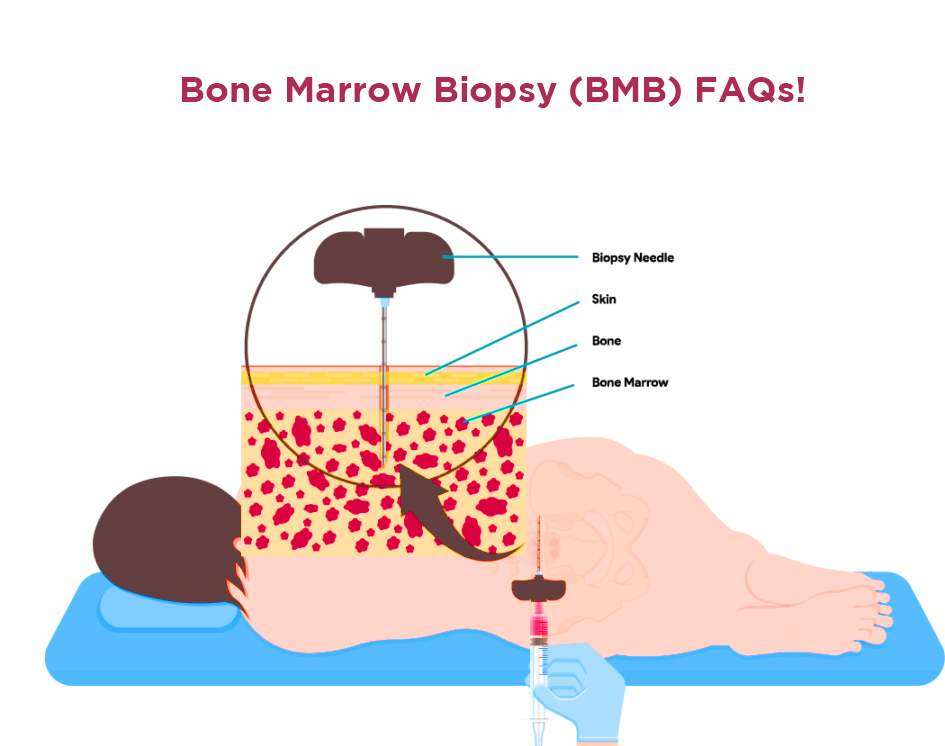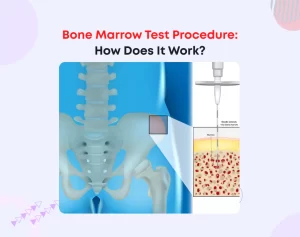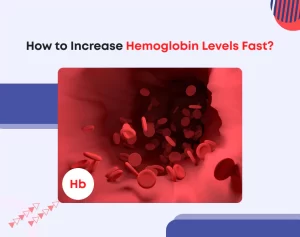
Bone Marrow Biopsy (BMB) FAQs!
The most commonly used procedure in Hematology OPD is biopsy and bone Marrow Aspiration
Peoples have many doubt regarding Bone Marrow Aspiration and the biopsy.
Here are some questions asked by MC and their answers concerning the Bone Marrow Aspiration and Biopsy.
Bone Marrow biopsy (BMB) FAQs!
Have you ever thought about what the BMB is about? What is the basis of BMB? Usually, it is two samples.
- Trephine (bone core)
- Aspirate (liquid marrow)
Why do we need two samples?
Aspirate:
The aspirate allows us to examine every BM cell using a microscope (e.g. RBCs or WBCs) in addition to classifying them by flow Cytometry (a method for the identification and evaluation of affected cells by their surface markers, e.g. CD19 for B-cells).
Trephine:
The trephine allows us to examine the way that the BM is structured and test for signs of fibrosis or infiltration. We can also apply stains (immunohistochemistry) to find specific cells on the trephine.
How do you accomplish it?
It’s a simple (20-30 minute) awake procedure that uses a local anesthetic. It doesn’t require theatre and is typically performed in the bed of the patient. It is done in a safe manner using two separate needles (aspirate and the trephine).
Where do you obtain the samples?
The majority of the time, we are able to collect samples from the posterior iliac center (on one side). If this is not feasible (e.g. problems with mobility), we can also access the anterior iliac crest. In very rare instances, it is also possible to consider having a look at the sternum.
Does it cause pain?
Extremely variable! We try to make it as pleasant as we can with a local anesthetic. Some people feel that it’s painful. Others feel uncomfortable, while some don’t have any sensations! Patients who require regular BMBs (e.g. patients w/ acute leukemia), often get “easier” over time.
Is it possible for the patients with low platelets or anticoagulants/antiplatelet?
Yes. BMBs aren’t likely to cause significant bleeding. In fact typically, it’s stopped through physically-based measures, i.e. pressure
Does it cause any problems?
BMB is a safe procedure. The majority of complications are minor discomfort or pain. However, there is a small chance of bleeding or infection. Damage to surrounding structures (e.g. the nerves and blood vessels) is not common.
What is the time frame for results?
Aspirates can be processed quickly based on urgency. Sometimes even after 24hrs trephines may take a little more time (around five days) because it has to be removed of its calcium and stained. Special stains (IHC) take longer. In the end, BMB can be a very useful test in certain circumstances and is generally well-tolerated.






